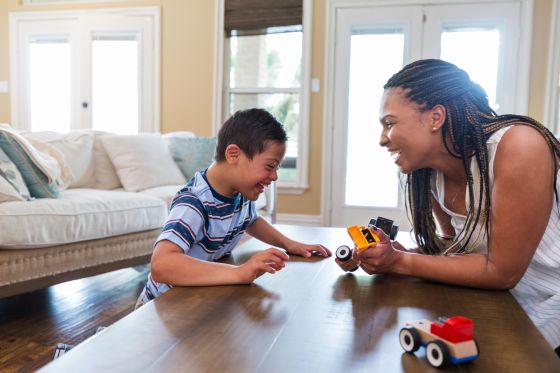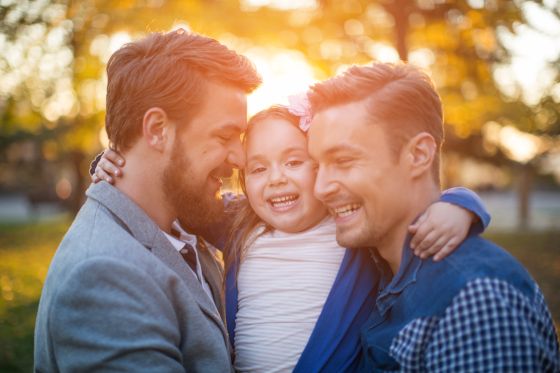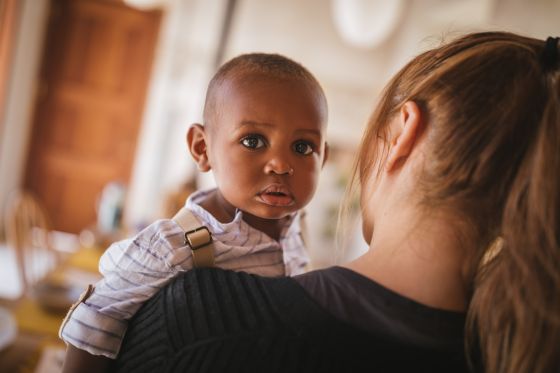Types of Adoption
We know all the different types of adoption can be overwhelming. With so many options, how do you know where to start?
If you’re asking yourself this question, you’ve come to the right place. Here we provide a comprehensive guide to all the types of adoption available to you today. Read a bit more about each one to decide which is best for your family-building goals.
And, if you’re considering adopting a baby in the United States, you can always request free information from our agency.
Ready? Let’s get started.
The Different Types of Adoption in the U.S.
Often, hopeful adoptive parents ask: What are the three types of adoption?
Generally speaking, the different types of adoptions available to adoptive parents are: private domestic infant adoption, foster care adoption and international adoption. In this section, we’ll focus on the first two: the most common types of adoption in the U.S.
Both of these options allow American adoptive parents to adopt children residing in the United States. While each adoption happens for different reasons, the end result is the same: a child receives a life of opportunities with a different set of parents.
Private Infant Adoption
Out of all the adoption types, private infant adoption is the best way to adopt a newborn. (You may also hear this process referred to as “domestic infant adoption,” “private domestic infant adoption,” “private domestic adoption,” and even just “infant adoption.”)
During this process, a mother chooses to place her baby with an adoptive family, often while she is still pregnant. She selects parents based on her wishes and desires, and she has the opportunity to develop a relationship with them during her pregnancy and after placement.
Prospective adoptive parents also have the right to set preferences for adoption opportunities (such as race, gender and medical history of a baby). Their preferences and openness to certain situations affects their wait time to adopt. However, on average, 85 percent of adoptive parents who choose this path receive a placement within two years of starting the journey.
Average wait time: 1–3 years (American Adoptions’ average: 1–24 months after activation)
Average cost: Varies
You’ll find many different kinds of adoption within the field of private infant adoption. Whether you’re a prospective birth parent or adoptive parent, an adoption professional like American Adoptions can guide you through your options and help you decide what is best for your family.
Here are just a few of those paths:
Independent
Out of all the types of adoption in the U.S., an independent infant adoption will require the most responsibility and work from hopeful parents. An independent adoption means parents work only with an attorney to complete the necessary legal steps of the adoption. They often have to advertise their own family and screen prospective birth parents themselves to find an adoption opportunity. For this reason, an independent adoption often takes much longer than an agency-assisted one.
Independent adoptions often occur when both parties know each other. Perhaps they are distant acquaintances, friends or family members. Whatever the case, independent adoption opportunities require direct contact between parties and work by the adoptive parents to ensure a prospective birth parent is receiving the support and assistance she needs.
While this type of adoption is right for some people, most prospective birth and adoptive parents choose to work with an agency through this journey.
Agency-Assisted
When you choose an agency-assisted infant adoption, you know that you and your adoption partner will receive the highest quality of support possible. An adoption agency will provide full-service assistance, taking care of every detail to ensure your process is completed safely, legally and ethically.
When it comes to agency-assisted adoption, there’s no better choice than American Adoptions. We’re a full-service, nationally licensed agency with more than 25 years of experience with infant adoption placements. We’ve guided many adoptive and birth parents through this process, and we’d be happy to help you, too.
Our agency offers:
- Free 24/7 counseling and support for prospective birth parents
- Financial assistance for pregnant women considering adoption
- Financial protection for adoptive parents, in case of a disruption
- References to and coordination with other adoption professionals
- Personal case management and support
- And more
While an agency infant adoption may not be one of the cheapest types of child adoption for adoptive parents, the services provided will make your journey much easier. To learn more about how American Adoptions can guide you — whether you’re a prospective birth parent or adoptive parent — contact us online or call our team at 1-800-ADOPTION.
Open Adoption
If you’re asking, “What types of adoption are right for me?” you should know that infant adoption often comes with an open adoption requirement for adoptive parents — that is, you should be prepared to share contact with your child’s birth parents after placement.
Open adoption is highly beneficial to all involved in an infant adoption. The type and frequency of post-placement contact is often determined by a prospective birth mother; phone calls, emails, texts and even in-person visits are all possibilities.
At American Adoptions, we require all adoptive parents to be open to a certain level of post-placement contact with a prospective birth mother. You can read more about those requirements here.
Closed Adoption
While it’s rare, closed adoption can sometimes be part of a private domestic infant adoption. Closed adoption is chosen by those birth mothers who want no contact with their child or their child’s adoptive parents after placement.
This type of adoption contact will always be set at the request of a prospective birth mother. Sometimes, women find it easier to move forward from placement with a “clean break.” Closed adoption gives them that opportunity.
If you are considering placing your child for adoption in a closed-contact relationship, American Adoptions can always help. You can call our adoption specialists for free anytime at 1-800-ADOPTION, or you can contact us online, too.
Foster Care Adoption
Parents who wish to adopt from the United States have many different types of adoption options. But, the most common type of adoption out there is foster care adoption. In fact, in 2017, almost 60,000 children were adopted out of foster care.
Foster care adoption involves children whose biological parents have had their parental rights terminated. Usually, it’s after a long process during which the biological parents fail to complete a reunification plan. Once their rights are terminated, a foster child can be adopted by a new set of parents — often relatives or their current foster parents.
Although there is a certain degree of risk in this type of adoption, it can still be a wonderful way to add to your family. If you think this path is right for you, please reach out to a foster care professional in your state for more information.
Average wait time: Varies by adoption situation, but about 60% of families receive a placement within 1 year
Average cost: $0–$2,500
International Adoption
While many adoptive parents are interested in the different types of adoption in the U.S., others feel called to a different path — adopting a child from another country. While international adoption numbers continue to dwindle, there are still certain options for those interested in this family-building process.
International adoption often takes longer than any other kinds of adoption. It involves two governments — the United States and the country the child will be adopted from — and navigating those rules and regulations can be tricky. If you are thinking about international adoption, you will need an experienced, Hague-certified agency by your side. Only this way can you safely, ethically and legally bring a child from another country into your family.
But, before you do so, there are some important things to consider. By their very nature, international adoptions are trans-cultural. There will be a cultural barrier between you and your adopted child, and you will need to take steps to preserve that culture and history as they grow up. You may also face a language barrier during your child’s initial adjustment to the U.S.; your adoption professional should help you prepare.
Average wait time: Varies by country, but averages at 12–36 months
Average cost: Varies by country, but averages $30,000–$35,000
Other Kinds of Adoption in the U.S.
When hopeful parents ask us, “What kind of adoptions are there?” the three above are typically the paths they’re interested in. But it’s important to know about all types of adoption, too — just in case one of these is an option for you.
These types of adoption do not typically require any professional assistance beside that of an attorney. If you’re interested in one of these adoption options, please contact a local adoption lawyer for more information.
Stepparent Adoption
Stepparent adoption is one of the most common types of adoption in the U.S. today. A growing number of children are parented by a single parent or a parent who has remarried, and many stepparents choose to adopt their stepchildren to legalize a relationship that already exists.
Stepparent adoption allows a parent to provide their stepchild with:
- Inheritance benefits
- Insurance benefits
- Convenience of everyday activities (like picking up from school and attending doctor’s appointments)
Stepparent adoption also provides a sense of finality and stability for the entire family, especially the adopted child.
Average wait time: Varies by situation. Some states require a certain marriage length before a stepparent adoption can occur.
Average cost: $1,000–$3,000, more if the adoption is contested
Adult Adoption
While adult adoption is somewhat rare, it is a great way to legalize an existing relationship between two adults. Often, former foster parents use adult adoption to adopt a former foster child who has aged out of the system. Adult adoption is also the path taken for stepparent adoptions in which the stepchild is older than 18.
Adult adoption provides the same benefits of stepparent adoption, allowing an adoptee to receive benefits from their new legal parents.
Average wait time: Varies based on circumstance, but can take as little as 1–2 months.
Average cost: Varies by state, but usually minimal (only the filing fee).
Relative Adoption
One of the final types of adoption is relative adoption. This kind of adoption can be a bit more complex and typically involves a foster care adoption or private infant adoption. In other cases, a relative adoption may be used as a way to avoid a foster care placement for children at risk in their biological parents’ home.
Different states have different laws when it comes to relative adoptions (also known as “kinship” adoptions). When children will be placed across state borders, ICPC regulations will still apply.
Average wait time: Varies, based on laws regulating the specific type of adoption involved.
Average cost: Varies, but usually minimal (only the filing fee).
If you’re asking, “Which type of adoption is right for me?” we encourage you to research all of your options thoroughly before moving forward. If private domestic infant adoption is one of your options, please contact American Adoptions online anytime or call 1-800-ADOPTION.









 Top Articles
Top Articles